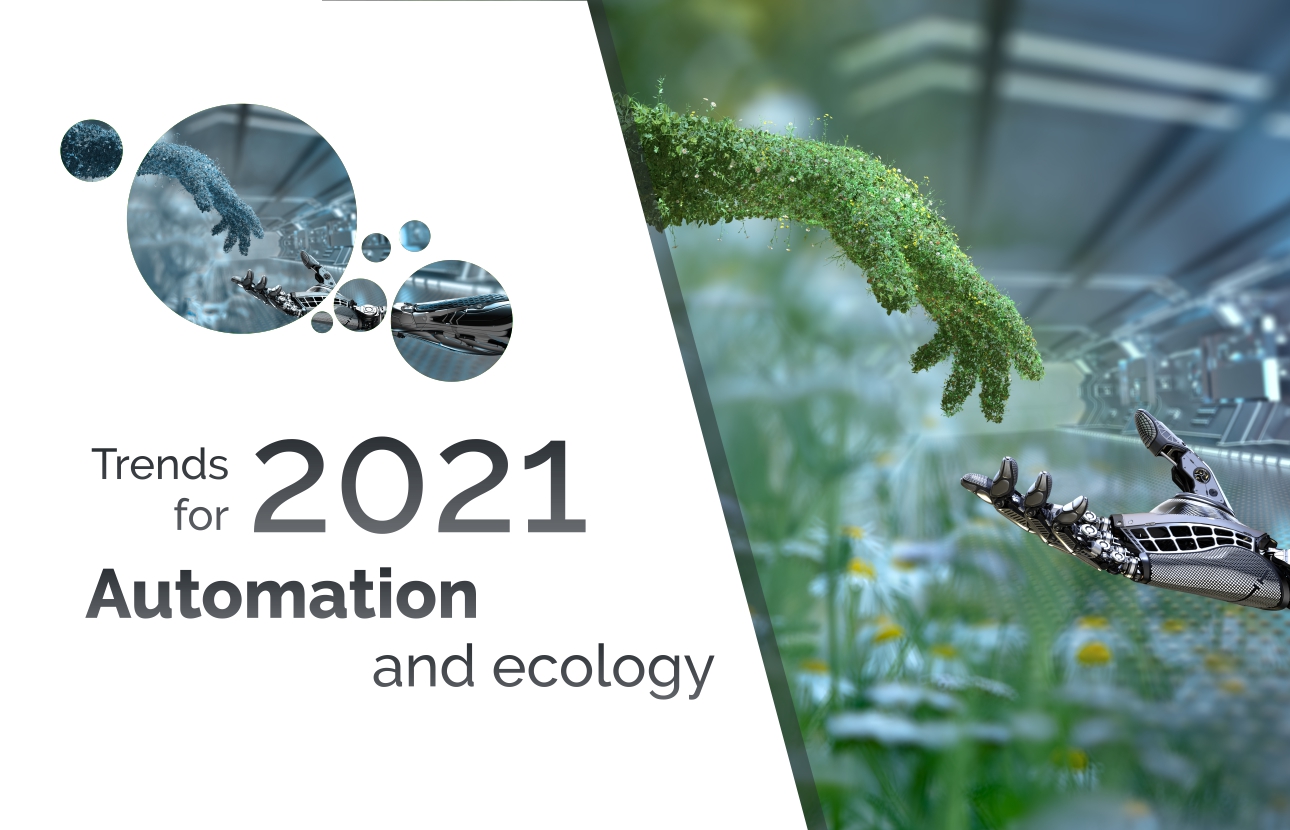The 21st century has become an arena of struggle between two seemingly opposite worlds. One of them is unstoppable technological progress, the development of modern industrial and digital solutions. The growing ecological awareness of the society becomes the other pole. The planet we live on is the most precious commodity we have, a good that is very easy to destroy, and impossible to rebuild. Both of these opposites are, however, an integral part of today’s life. So how to reconcile them? Is the growth possible without harming the environment?
Joined forces
It seems that the above-mentioned fight is not the only solution, and technological progress along with ecology can go hand in hand to improve condition of our precious, green house. Technology is not only about gloomy, smoking factories that pollute the atmosphere, rivers and soil. For many years, science has fought for the most effective ways to reduce the amount of poisonous waste, as well as the most productive use of renewable energy sources. More efficient wind turbines, photovoltaic panels and energy storage facilities are created. Chimneys are equipped with 21st century filters, capable of capturing a huge percentage of pollutants. So why is the Earth still struggling with the problem of climate warming, the greenhouse effect? At the moment, this is mainly due to the smallest elements of infrastructure – single-family houses, cars.
Green houses, green roads
For several years, however, we have seen an increase in the popularity of “green houses.” Co-financing programs are being developed for installations obtaining clean energy (photovoltaics), heat pumps, and thermo-modernization of buildings. The effects are immediately visible, both in households’ wallets, but also in the emission of pollutants caused by these buildings. It is estimated that the energy efficiency of houses equipped with such solutions increases by up to 50% compared to traditional ones. However, in order for these actions to have an impact on global changes, they need to be implemented on a huge scale.
The automotive industry also follows ecological trends and looks for solutions to reduce the emission of exhaust gases harmful to humans and the environment. More and more often, we meet hybrid or fully electric cars on the street, and even the traditional, internal combustion ones are being equipped with technologically advanced systems limiting emissions and purifying gases leaving the car’s exhaust.
Ecological automation
The automation of key stages of logistics processes, especially in the field of postal shipments, is also moving towards sustainable development that supports ecology. This is happening on several levels, however, smart parcel stations play a fundamental role in them.
From year to year, we observe a significant increase in the turnover of the e-commerce sector. Its effect is the constantly growing number of packages that have to be sent to their addressees. Only in 2020, partly due to the epidemic threat, over 25% increase in e-commerce sales was recorded. Moreover, experts predict that consumer habits will persist in this channel also after the crisis has ended.
Switching to this sales model requires advanced logistics, millions of kilometers traveled, thousands of liters of fuel burned while driving and during a stop necessary to deliver the shipment. All this translates into the emission of a large amount of harmful substances into the atmosphere, poisoning it, and indirectly all of us. In the traditional delivery model, it is necessary to deliver the parcel to each address, even if there is a small parcel or letter to be delivered. In addition, the absence of the addressee forces an additional delivery attempt, causing unnecessary tension on both sides. The use of parcel machines significantly reduces all the above-described inconveniences by limiting the courier’s route to specific centralized points without the need to visit many places.
The last mile can be green
How much does the use of parcel lockers improve the efficiency of deliveries at the “last mile” stage? According to the report “Analysis of parcel lockers’ efficiency as the last mile delivery solution – the results of the research in Poland” from 2015, delivery to automated parcel stations allows to make up to 10 times more shipments, while reducing the average distance traveled by the courier in one day from 150 to 70 kilometers. Such changes entail a 20-fold reduction in fuel costs per year, and the amount of carbon dioxide emitted during the process is reduced from 22.5 million tonnes to just 1.5 million a year. Such numbers make a colossal impression and show that the use of this type of devices has a very solid economic and environmental justification.
The future is here
In the era of prevailing ecological trends, the use of parcel lockers is justified, and their effectiveness in reducing pollutant emissions has been proven by numerous studies. Despite the fact that they have settled for good on the polish market, many industries still do not see their potential. With their help, you can carry out a very wide range of tasks, both postal and related to the provision of all kinds of services, the delivery of subscriptions, grocery shopping and more. It is certain that in the coming years we can expect a further increase in the share of these technologically advanced, yet easy to use devices.


